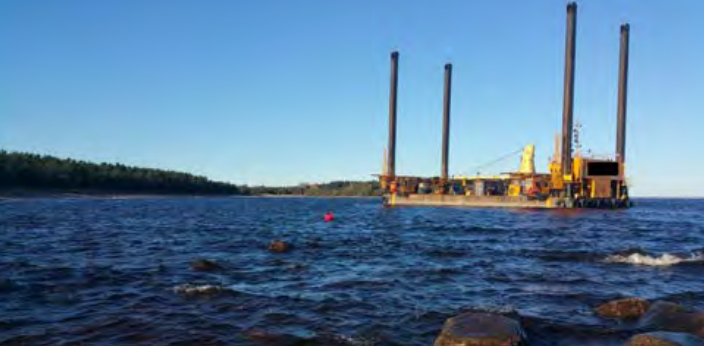In its latest Safety Digest for 2019, UK MAIB describes a case of a barge grounding due to failure of towing wire. With respect to this incident, UK MAIB advised that companies should therefore include a time frame for replacement of the towing wire eye hard socket within their operating procedures.
The incident
A 25m tug was towing a large unmanned semi-floating drill barge in the Baltic Sea.
Owing to deteriorating weather conditions, the tug’s master decided to anchor the tug overnight in a sheltered anchorage with the intention of continuing on passage the next day once the weather improved.
The tug was anchored 1.4nm offshore in 12m of water, with 5 shackles of anchor cable deployed. The towing wire between the tug and the barge was shortened to 50m.
At 0115, the watchkeeper called the master to the bridge, because he was worried that the vessel was dragging anchor.
The master noted that the wind had veered, so he spent a period of time on the bridge until he was satisfied that the anchor was holding in the new wind direction.
At 0345, the watchkeeper again alerted the master that the anchor may be dragging.
When the master arrived on the bridge, he noted that the wind direction had again shifted, and had increased to force 6. Sea conditions had worsened.
The tug’s engines were started and preparations made to commence heaving the anchor.
At 0420, a loud bang was heard while the anchor was being heaved; the towing wire connecting the tug to the barge had parted. The barge began drifting towards the shore at a speed of 1.7kts.
After weighing anchor, the tug’s crew tried to pick up the emergency towing line that was rigged on the barge, but without success. The barge grounded as it approached the shore.
Salvors successfully refloated the barge 3 days later.
The towing wire
- The towing wire failed as the tug’s anchor was being heaved. The tow line failed in the vicinity of the hard socket on the eye of the towing wire. Subsequent destructive testing of the towing wire showed that it parted at a significantly lower load than expected. The towing wire had a certified minimum breaking load of 102.95t; during testing it began to fail at 64t and parted at 87.74t.
- An inspection of the towing wire identified that the wire was rusty, and flat spots and areas of wear were identified. However, the towing wire was 7 years old and had been inspected regularly by the ship’s master as required by the company safety management system. No defects or damage had been recorded.
Lessons learned
- The decision to go to anchor was prudent. However, when selecting any anchorage, care must be taken to ensure that there is sufficient sea room to allow time to deal with any unexpected circumstances. A full appraisal of the weather forecast should be taken prior to choosing an anchorage, and all of the risks assessed to include the possibility of worse than forecast conditions.
- An emergency towing arrangement was fitted onto the barge, but due to the design of the barge and the structures on it, access from the tug to the emergency towing arrangement was difficult. Emergency towing equipment must be rigged in such a way that it remains accessible at all times.
- Competent persons tasked with the inspection of towing wires must ensure that a thorough inspection of the wire rope takes place, and, if defects are found, that the rope is removed from service. Appropriate advice on maintaining towing wires is provided in MGN 308(M+F) Mooring, Towing or hauling equipment on all vessels – safe installation and safe operation, and in the Code of Safe Working Practices for Merchant Seafarers (COSWP).
- Wire hidden within a hard socket cannot be visually inspected. Companies should therefore include a time frame for replacement of the towing wire eye hard socket within their operating procedures.






























































